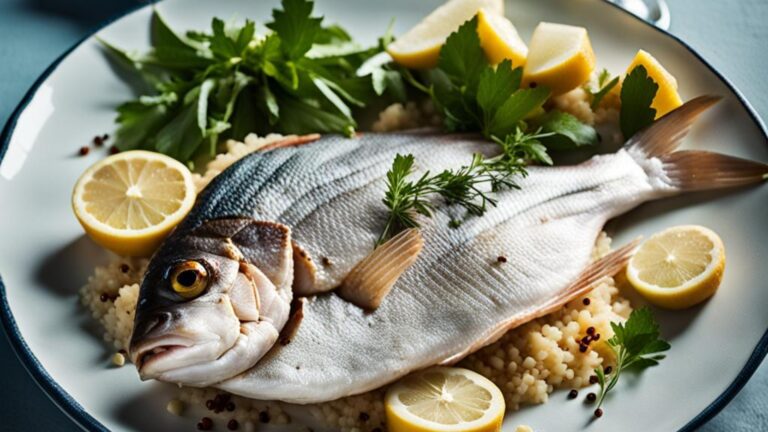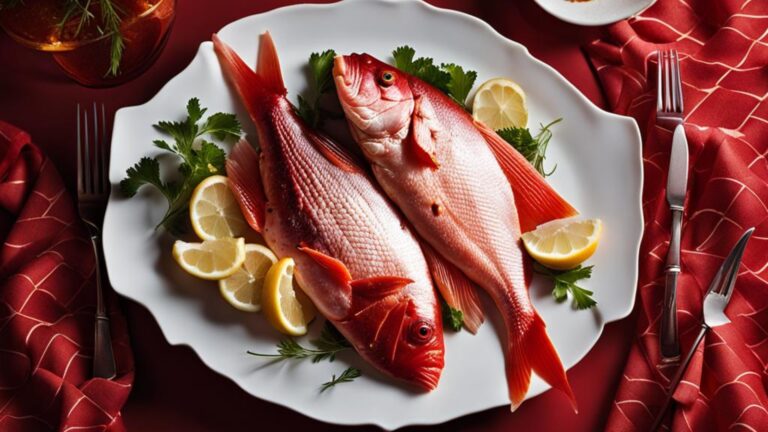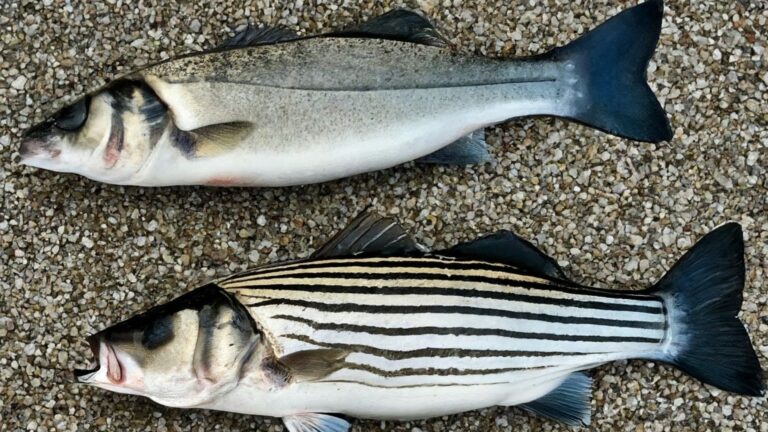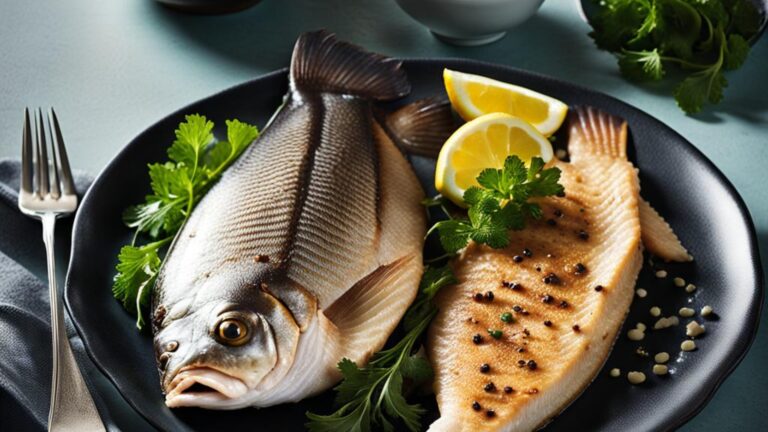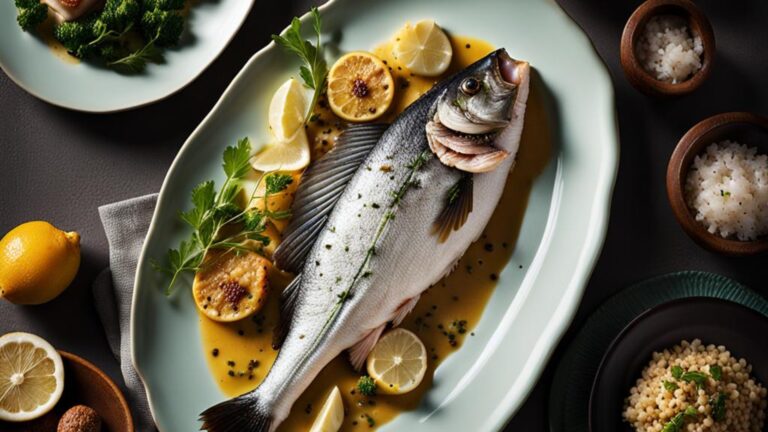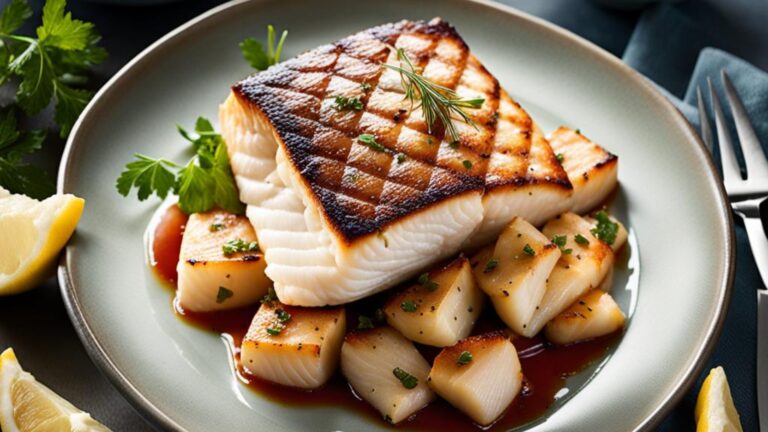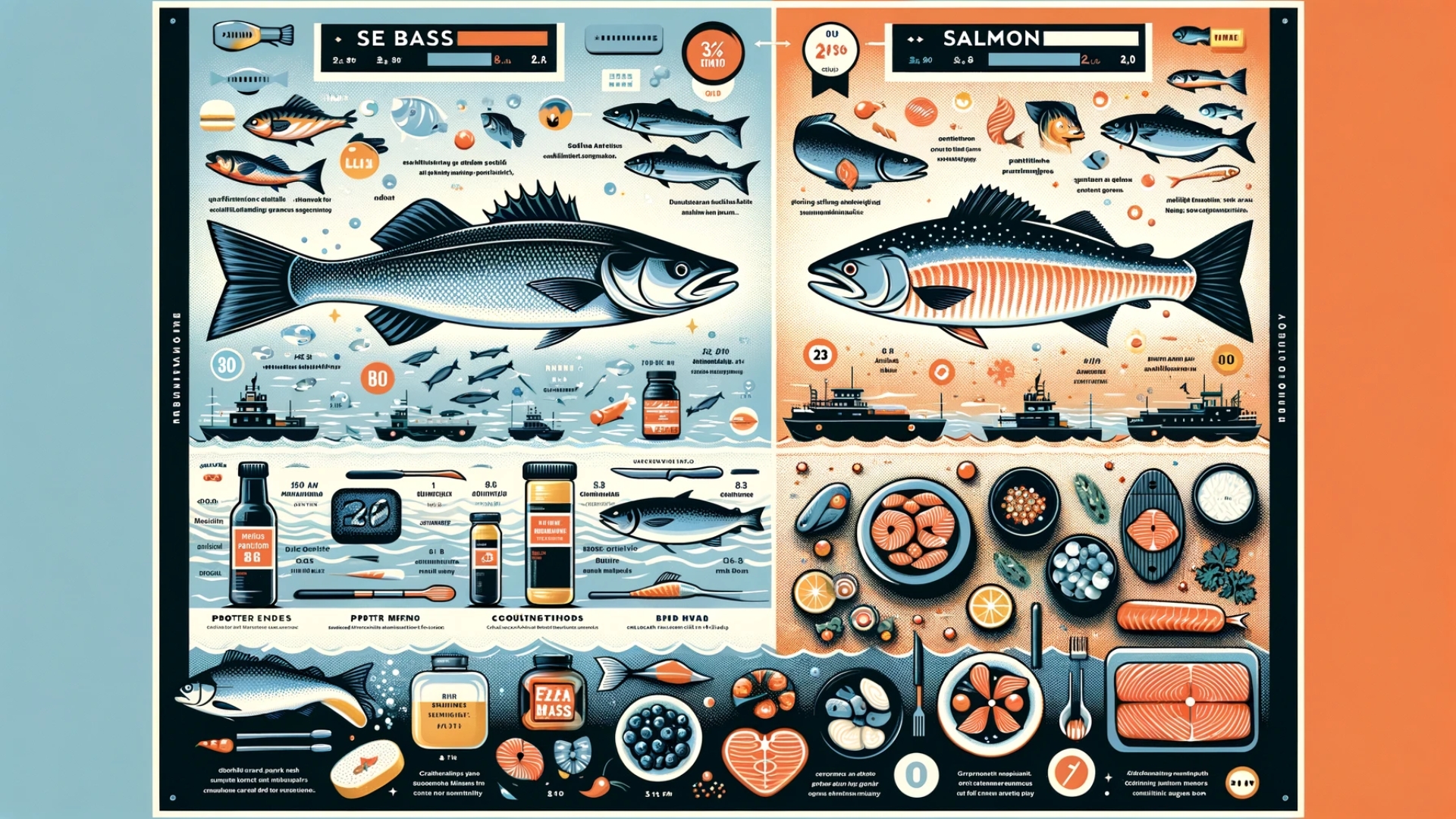
If I start talking about sea bass vs. salmon, the main difference that comes to my mind is that sea bass boasts delicate richness while salmon offers robust flavor. Texture, color, and distinct taste set them apart in culinary realms.
In the realm of gourmet dining and health-conscious meal choices, the debate over sea bass versus salmon has long been a topic of discussion.
These aquatic wonders hold a special place on menus and in kitchens worldwide, revered for their exquisite flavors, versatile culinary applications, and impressive nutritional profiles.
This discussion will draw an end to the long-going confusion. Besides the differences, I will add similarities between these two and finally suggest one for you. So, let’s start the discussion.
An Overview
Before I start the detailed discussions, let’s see all the differences in the short table to keep things in front of your eyes.
Here is a comparison table between these two.
| Characteristic | Sea Bass | Salmon |
| Family | Serranidae | Salmonidae |
| Native Regions | Eastern Atlantic Ocean, from southern Norway to Senegal | North America, Iceland, Greenland, Europe, and Russia |
| Size (Weight and Length) | 2-9 Pound and 20-26 inches | 4-20 pounds and 15-35 inches |
| Body Shape | large head and mouth, tight scales, elongated body shape | Mostly torpedo-shaped. Some are flat, some are round |
| Coloration (Color) | Diverse color: black, dusky brown, or pale green | Vibrant red, pale pink, or even white |
| Diet | Consume everything smaller than it | Since they are opportunistic hunters, they eat Shrimp, Mayflies, Stoneflies, Sprats, Zooplankton, etc. |
| As a Food | mildly sweet flavor | Sweet and fatty texture |
| Grilled sea bass ceviche, miso-glazed sea bass | Tastes like trout or chicken | |
| Popular Species | European seabass | Atlantic salmon |
| Chilean sea bass | Pink salmon | |
| Aquarium Friendly | Yes | Can be kept but have confusion |
| Lifespan | Up to 25 years | 2 to 7 years |
Sea Bass vs. Salmon: Detailed Differences
Now that we have looked at the distinct characteristics of sea bass and salmon let’s dive deeper into the intricate differences that set these remarkable fish apart.
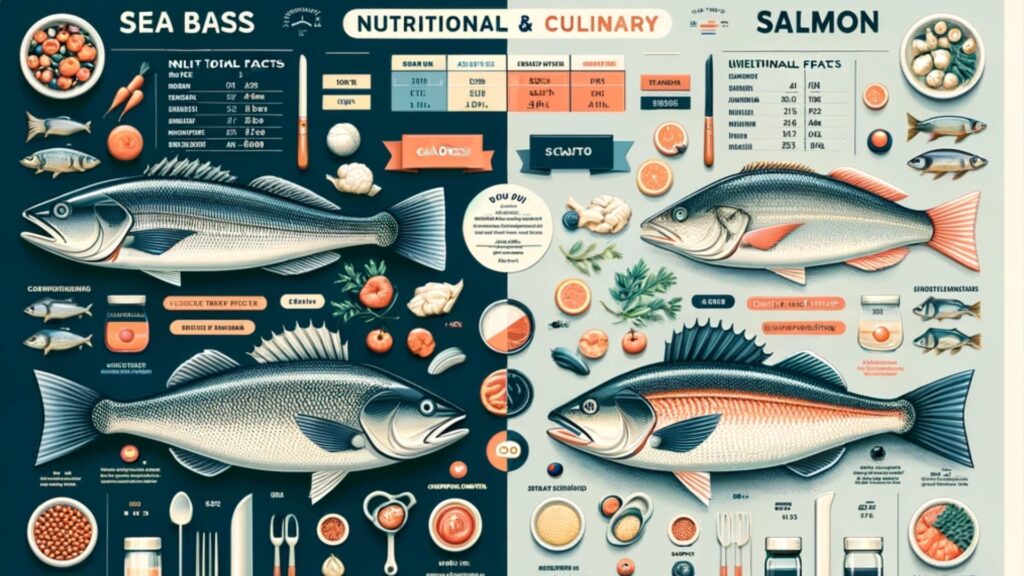
Family and Native Regions
Sea bass belongs to the Serranidae family and is native to the Eastern Atlantic Ocean, ranging from southern Norway to Senegal.
On the other hand, salmon belongs to the Salmonidae family and is found in North America, Iceland, Greenland, Europe, and Russia.
Size Differences Weight and Length
Regarding size, sea bass weighs between 2 and 9 pounds and measure around 20 to 26 inches in length. In contrast, salmon displays more significant variability, with a weight range of 4 to 20 pounds and lengths spanning 15 to 35 inches.
Body Shape Differences
Sea bass features a distinctive elongated body shape, often characterized by a large head, mouth, and tight scales.
In its various species, Salmon tends to possess a torpedo-shaped body, although some variations, like flat and round shapes, also exist.
Differences In Coloration
Sea bass boasts diverse color variations, ranging from black and dusky brown to pale green.
On the other hand, salmon presents a vibrant spectrum of colors, including the iconic red and pale pink hues and, in some cases, even white shades.
Diet Of Both Sea Bass and Salmon
Both fish exhibit distinct dietary preferences. Sea bass has a reputation as an indiscriminate predator, preying on anything smaller than itself.
On the contrary, salmon’s diet is more nuanced. As opportunistic hunters, they consume a variety of aquatic organisms, including shrimp, mayflies, stoneflies, sprats, and zooplankton.
Sea Bass and Salmon Taste
In the culinary realm, sea bass is celebrated for its mildly sweet flavor and delicate richness. On the other hand, salmon offers a robust flavor profile, often described as a mix between the taste of trout and chicken.
The texture of sea bass tends to be tender, while salmon’s texture leans towards the sweet and fatty side.
Sea Bass And Salmon As a Food
This part I love to talk about. When it comes to fine dining, both sea bass and salmon are A-listers in different roles.
Sea bass struts its stuff when grilled to perfection, transformed into zesty ceviche, or dressed in a mouthwatering miso glaze.
On the other side of the culinary stage, salmon takes the spotlight with its unique taste. It’s a headliner in various dishes, from the elegant world of sushi to the rich realm of smoked delicacies.
Popular Species
Let’s dive into the world of fish species! You’ve got the European seabass and the Chilean sea bass in the sea bass crew, strutting their stuff.
Conversely, the salmon squad has the Atlantic and pink salmon making their names known. It’s like a fish family reunion with these recognizable faces!
Lifespan
Sea bass wins the longevity game, hanging out for 25 years. Meanwhile, salmon are more like short-term guests, usually sticking around for 2 to 7 years.
Nutritional Differences Between Sea Bass and Salmon
When making the fish decision – sea bass vs. salmon – think light versus protein powerhouse. Sea bass is your lean buddy, waving the low-fat flag with less total and saturated fat.
But here comes salmon, flexing its muscles with higher protein levels and those omega-3 superheroes that keep your heart smiling, thanks to its extra fat content.
Hold on, they’re not done yet! These fish are like your nutrient-packed sidekicks, bringing the goods like vitamin B12 and iron to the table. They’re the Batman and Robin of your well-rounded diet plan.
For a quick rundown, check out the nutrition table below. So whether you’re leaning towards sea bass or diving into salmon, your body is in for a nutritious treat!
| Nutrient | Sea Bass | Salmon |
| Calories | 124 | 208 |
| Protein | 24 g | 20 |
| Total Fat | 2.6 g | 13 g |
| Saturated Fat | 0.7 g | 3.1 g |
| Cholesterol | 53 mg | 55 mg |
| Sodium | 87 mg | 59 mg |
| Iron | Not specified | 0.3 mg |
| Vitamin B12 | 0.3 µg | 3.2 µg |
Conclusion
I’ve unearthed the myriad differences defining these two exceptional fish in this comprehensive exploration of sea bass and salmon.
From their family origins to their culinary applications, each aspect reveals their uniqueness and the pleasures they bring to the dining table and the fishing line.
If you are still confused about these two fishes, please ask me in the comments or personal mail. You may contact me through the contact form. Thanks for reading my blog.

